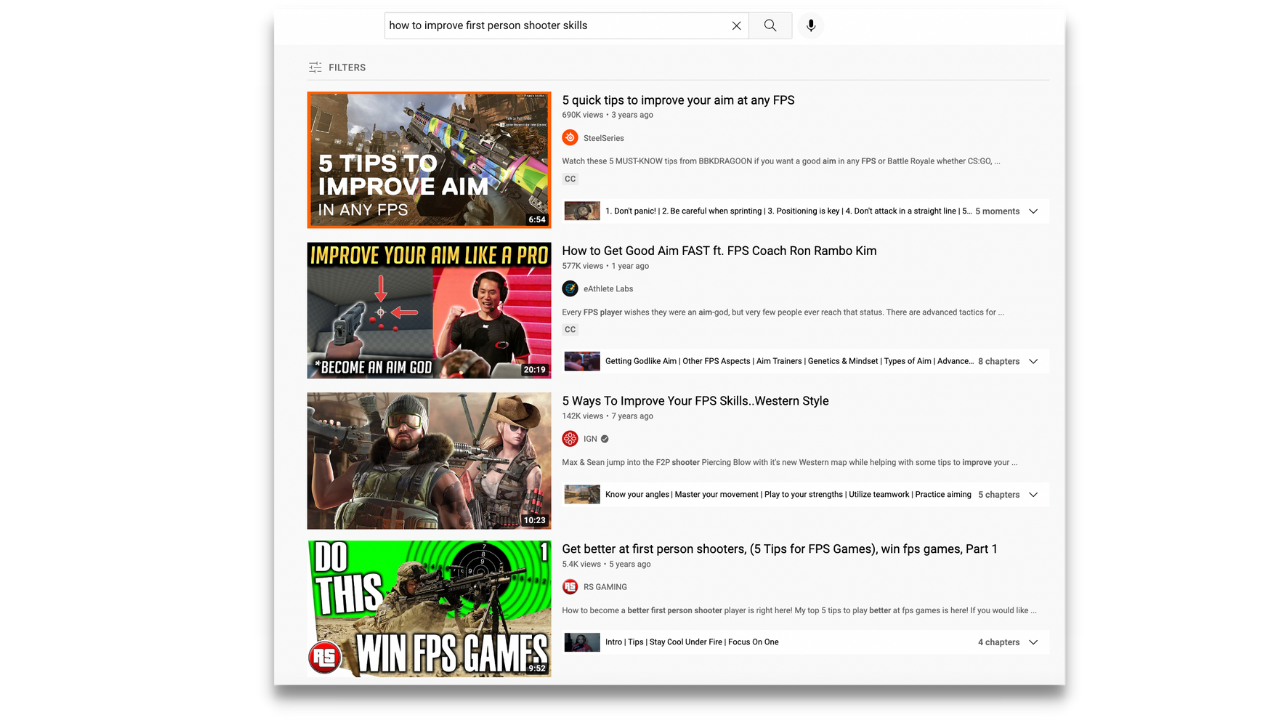
PTPA #008: How to turn any idea into a side project (and a business)
Oct 09, 2022Read time: 6 minutes
Working on your side projects is one of the best things you can do to get into Product Management, transfer into a new industry, or start your own business.
Over the last 3 years, I transformed an idea into a side project and today, a business. This same side project also helped me to move from my previous job as a Product Manager in B2B to my current PM job in B2C.
However, most ideas don’t go beyond being just that - an idea.
You need to shift your mindset from wondering whether your idea is a good idea or whether anyone will be interested in it, to searching for problems and opportunities everywhere you go.
This is exactly what happened to my friend John (not his real name) as we brainstormed how he could turn his idea - helping others to be better at a videogame, into a project that would help him get into Product Management.
Here’s the story and how you can apply the same principles to turn any problem you find (and ideas) into a project and, ideally, a business.
The Backstory
My friend John is very, very good at online competitive First-Person Shooter (FPS) video games.
John posted on Reddit his stats from the game and offered to help others to improve their techniques in the game by doing 1:1 sessions and giving feedback.
This post quickly became a discord server for 50+ players looking for advice from him. My friend John was receiving a total of $0 for this.
His love for the game and passion to help others were enough.

His professional goal is to become a Product Manager, but helping people to get good at a videogame didn’t seem like a way to do it - he was thinking of leaving behind this passion project and doing something more tech-related.
He was wrong.
Projects that help you get into Product Management or switch industries have nothing to do with the Technology you use and instead are focused on whether you executed them as a PM would.
Every side project has the same 4 components:
- Problem (What and Why?)
- Solution (How?)
- Scale (10x)
- Reach (Where?)
Let’s dive into each one.
Problem (What are solving? Why are we solving it?)
John, without knowing it, had done the most challenging part of the work already:
Finding a problem to solve and validating that it is a problem worth solving. Validating the problem is as important as finding it.
Thousands of players in the game are looking to get better, but most can only refer to YouTube videos that offer generic advice.
He saw this pain point and the need for personalized feedback.
He validated his hypothesis by posting on Reddit - then creating a group that grew quickly.
This is as far as his idea went. Consulting/Coaching others can be a profitable business (although he did it for free), but it’s hard to argue that it’s a great project to showcase your Product Management skills - his ultimate goal.
We had to push his idea further to make it a side project he could add to his resume to get into Product Management.
Solution (How are we solving it?)
One great way to think about how to solve the problems that you find is to start by doing things that don’t scale. 1:1 calls are a great way to learn more about your customer’s problems and after a few, you can start noticing patterns.
John discovered, after a few coaching sessions, that while players want personalized feedback, there are patterns in the mistakes they make, and therefore the advice he gave them was the same.
Solution: He could classify the problems that players were facing in groups and record himself solving those problems.
Whenever a new player requested a 1:1 meeting, instead of spending 1+ hour(s) with them, he could observe them play for a few minutes and then send a link to the recordings for them to watch.
This solution starts to save him time for those 1:1s, but it still doesn’t allow him to serve a bigger community if he needs to meet with new players often.
It’s still hard to argue that manually sending a list of videos is a project that he could sell as Product Management experience. However, your side projects can have 0 lines of code and still become a business or a project to help you land your next job.
Scale (10x your solution)
Sooner or later it’s time to think about automation, platforms, and scalability - otherwise your side project (or business) will have a short reach and you’ll find yourself immersed in repetitive tasks.
Your goal is that you should spend more time creating than maintaining your project.
You can scale projects by investing in automation, outsourcing, or a mix of both. Record all the work you do for your customers and identify tasks that you repeat often. You can start by using tools like IFTT (If This Then That) and Zapier to automate your workflows.
Scaling: With a library of videos to show new players how to improve, John could still solve for personalization through 1:1s - his biggest bottleneck. He can’t scale his project unless he can scale personalization and reduce the number of meetings.
So there are a few ways in which he could scale, keeping personalization at the center (his value proposition).
These are not mutually exclusive, and can easily be added to an app or website built with no-code tools.
- Using player’s data: Based on the player’s scores, John could create a collection of specific videos with the most common problems for that level. Automatically sent after players submit their score and game stats.
- Creating different offers: John could create different bundles of advice that customers can purchase ad-hoc, depending on their perception of the mistakes they make.
- Cohort coaching: John can move from 1:1 to Cohort based where he could coach a group of players at the same time during a finite period.
- Outsource 1:1 coaching: John can ask players to record a 5-minute video of their game. He could train virtual assistants to identify problems and then, based on those problems identified, send a specific playlist of solutions to that player.
Scaling doesn’t have to be about complicated technological features (e.g. using AI&Machine Learning, which he could). Scaling your projects is about improving workflows and creating automation - later on, you can invest in complex technology.
With less time spent on maintaining the solution, John can focus on expanding and growing the project (business).
But regardless of how much effort he puts into the solution, without showing it to the world, no one will know it exists.
Reach (Where are you showing your project?)
The first week I announced my new Course to ace any Product Manager interview (and without running ads) 87 people signed up. At the time, my course was not complete - I sold it in a pre-sale campaign (MVP).
87 people bought it in a week even if the course wasn’t complete, not because my landing page is the best in the world, but because I’ve been building in public for the past 2+ years and showing the value of my projects. I have been marketing my brand and expertise even before I had a product launch.
For John, for me, and anyone else’s side project/business, marketing is a fundamental part of its success.
Once you have an idea, you can’t hide it until it’s completed. The fact that I’m talking about this at the end, doesn’t mean it’s the last step. From day one (or before) you should already be thinking about how and where to start talking about your project.
Go and talk about it where your customers are.
Reach: For John, advertising his side project involves going back to Reddit and Games forums where players are constantly trying to improve their skills. The less time that John spends maintaining his project (Scale), the more time he will have to evolve it and advertise it.
The next time you find yourself thinking about whether your idea is good enough to help you land a job in Product Management, change industries, or start a business, start working on:
- Understanding what problem you are solving and why (Problem)
- How are you solving that problem (Solution)
- How are you scaling your solution (Scale)
- Where are you showing it (Reach)
And you’ve got yourself a full side project that can help you reach your goal.
Will it take time? Absolutely.
Is it worth it? You wouldn’t be here with me reading this if I hadn’t worked on my side projects.
Thank you for being here and I’ll see you in the next article!
1. Crush your Product Manager interviews and get an offer here. (Join 600+ students!)
2. Schedule a 1:1 session with me for Mock Interviews and Career Guidance here.
3. Promote your brand/business to 7K+ Newsletter subscribers by sponsoring content.
Helping Everyone To Land Their Next Product Manager Job
Join 8,000+ current and aspiring Product Managers in my Newsletter. Every email gives you a quick and actionable tip on landing your next Product Manager offer.
I hate SPAM. I will never sell your information, for any reason.

